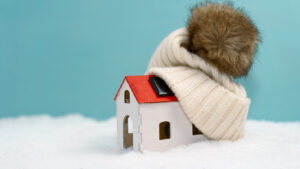
As the cold weather approaches, many homeowners focus on winterizing their homes to ensure comfort and energy efficiency. One often overlooked area is the crawl space, which can be a significant source of heat loss, moisture problems, and even mold growth. Crawl space encapsulation and the installation of vapor barriers are essential steps to protect your home during the winter months.
Why Winter Preparation Should Include Crawl Space Encapsulation
When temperatures drop, unsealed crawl spaces allow cold air to enter your home, forcing your HVAC system to work harder and driving up energy bills. Encapsulation involves sealing the crawl space with a durable vapor barrier that prevents cold air from entering, insulating the area and keeping your home warmer.
Additionally, encapsulation helps prevent moisture build-up, which is especially important during the winter when homes tend to trap more moisture due to reduced ventilation.
Benefits of Installing Vapor Barriers
Vapor barriers are an integral part of the encapsulation process. These barriers prevent ground moisture from entering your crawl space, reducing the risk of mold growth, wood rot, and pest infestations. Here are some key benefits of installing vapor barriers:
-
Energy Efficiency: By sealing your crawl space, you reduce drafts and energy loss, allowing your home to maintain a consistent temperature.
-
Moisture Control: Vapor barriers block moisture from seeping into your home, protecting your foundation and reducing the risk of structural damage.
-
Improved Indoor Air Quality: Since moisture and mold can contribute to poor indoor air quality, encapsulation and vapor barriers help ensure your home remains healthy and mold-free.
When to Install Crawl Space Encapsulation
The best time to encapsulate your crawl space is before winter fully sets in. Early fall or late summer is ideal, as the weather is mild, and moisture levels are typically lower. However, encapsulation can still be done in colder months as long as conditions are dry.
Maintaining Your Crawl Space Encapsulation
Once your crawl space is encapsulated, regular maintenance is key to ensuring its effectiveness. Check the vapor barrier for any tears or damage and monitor humidity levels in the crawl space to ensure moisture is under control. You may also consider installing a dehumidifier in the crawl space for added moisture protection.
Protect Your Home This Winter
Winterizing your home should go beyond windows and doors—your crawl space plays a vital role in your home’s overall comfort and safety. By encapsulating your crawl space and installing vapor barriers, you not only reduce energy costs but also prevent moisture problems that can lead to long-term damage.
